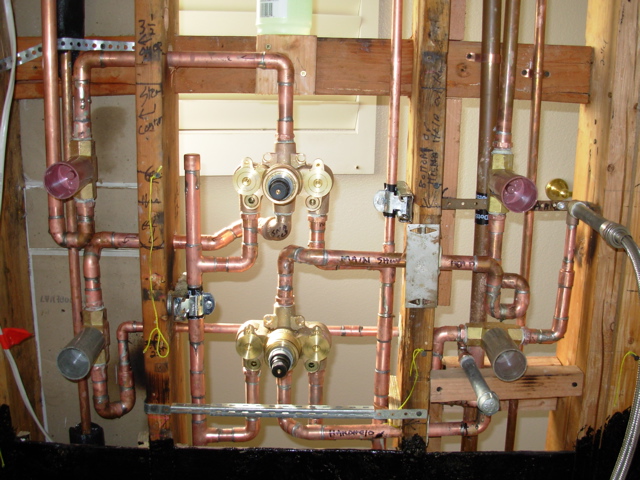2 Things You Can Learn About Plumbing Now

They had over two hundred positive reviews about their blades so I had to check them out. I contacted the company and they were very gracious in that they sent me two of their most popular multi-tool blade assortment kits. Before I move on please know that I did not pay for these blades and agreed to produce the below video after trying them out. I received two kits, a 15 piece multi tool saw blade set which consisted of three pieces each of five different blades. And a 10 piece bi-metal saw blade set all which consisted of one style blade. I tried each of the blades out on different materials such as 1/4″ plywood, 1″ X 3″ stock, 2″ X 4″ stock, 3/4″ p.v.c. and 1 1/2″ p.v.c. pipe, light gauge angle steel and finally 3/8″ threaded rod. I thought across the board they performed well but did find that the 10 piece bi-metal struggled a bit on the 3/8″ threaded rod. Don’t get me wrong, it made the cut but on threaded rod I’d probably use my hacksaw or sawzall.
http://www.bobsplumbingvideos.com/multi-tool-blades/Brackish Water: Water containing bacteria between 1,000 and 15,000 ppm of dissolved solids. Branch Vent: A vent pipe connecting one or more individual vents with a vent stack or stack vent. Brass: Slang for faucets and fittings regardless of materials used. Burst Pressure: The internal pressure that will cause a piece of tubing to fail. Branch Drain: Plumbing fixture drain that leads to the main drain line. Bushing: A fitting that’s threaded inside and outside that joins pipes of different sizes. CC Connection: A term for a Copper Connection. (a shower water valve denoted as CC usually requires soldering). Check valve: A device that allow flow in only Gordontheplumber.com Roselle Illinois 60172 one direction. Circuit Vent: A vent that connects to a horizontal drainage branch and vents two traps to a maximum of eight traps or trapped fixtures connected into a battery. a tank for storing water.
https://plumbingcodestuff.tumblr.com/post/147932971048/randomsudoisms-diagram-of-stack-vent-if-you#_=_
Forming good habits early on will help set to the tone for a plumbing marketing strategy and set it up for success. Using social media for plumbing marketing is an ongoing process that constantly needs to be adjusted and improved upon. There are always new things emerging in the world of social media, new sites, new mediums, new technology. Staying on stop of things by forming good habits can help set you up to be relative and competitive. Engaging with your audience is one of the most crucial things a marketer can do. It is important to get in the habit of responding to comments, likes, reviews, and messages in a timely manner. Failure to do so, could leave the engagement score lacking, not to mention brush of customers. Its important to make customers feel important by acknowledging them, especially when they take the extra time to engage directly. In the case of reviews, particularly bad reviews, it is always best to respond and attempt to work it out. Posting compelling content on a regular basis is crucial to the success of using social media for plumbing marketing. Every day people login to their social media accounts with the intent of consuming content.
http://www.growplumbing.com/2018/03/03/forming-good-habits-when-using-social-media-for-plumbing-marketing/?utm_source=feedburner&utm_medium=feed&utm_campaign=Feed%3A+GrowPlumbing+%28Helping+Plumbers+Grow+Their+Business%29It can also occur in regions where the chlorine level in the municipal water pipeline is very low, if the amount of sulfates is increased such as in old iron piping, or if the water heater was inactive for days and water was just seating in the tank without moving. What causes the problem is the development of the anaerobic bacteria, which resides especially in the warm environment such as the water tank heater. As the tank-type water heater, no matter is it electric or gas, comes with the anode rod made of magnesium or aluminum, the bacteria, helped by the electrons from the anode, are using the sulfates as an energy source and converting it to the hydrogen sulfide gas – followed by the rotten egg smell. Someone will say: “Then remove the anode and you will get rid of the smell”. The answer is NO! Because the anode rod is there to protect the metal water tank from corrosion. This is also known as the cathode protection. The heater will last longer, as long as the anode is there to protect it. Once you remove it, the metal tank will be exposed to aggressive water action, and depend only on the glass/porcelain lining. If for any reason there is an even a small area cracked or not covered by the imperfect manufacturing process, the water gets in contact with the metal and the corrosion starts developing.
http://www.hot-water-heaters-reviews.com/how-to-fix-smelly-water-heater.html
Comments
Post a Comment